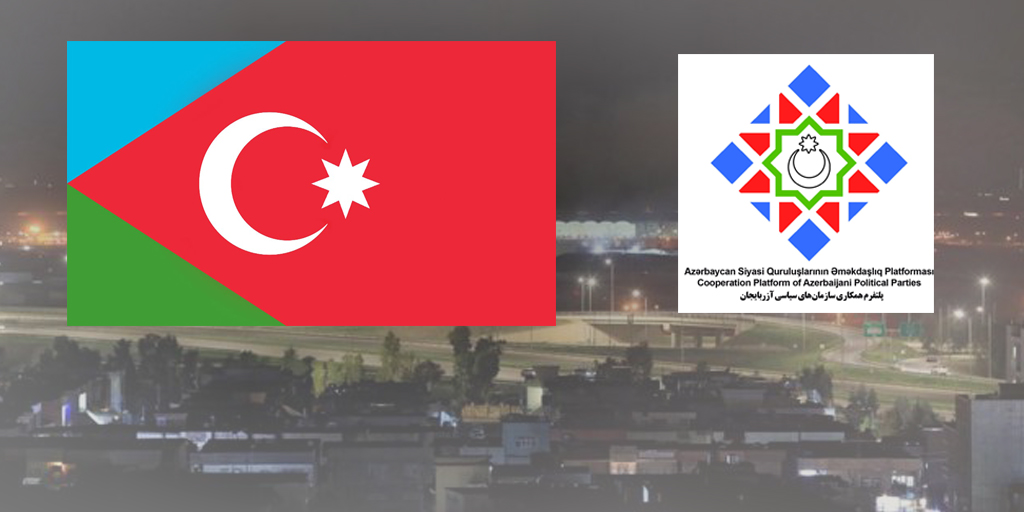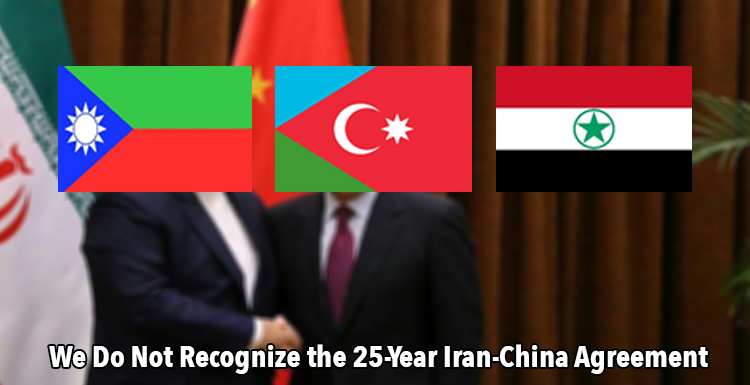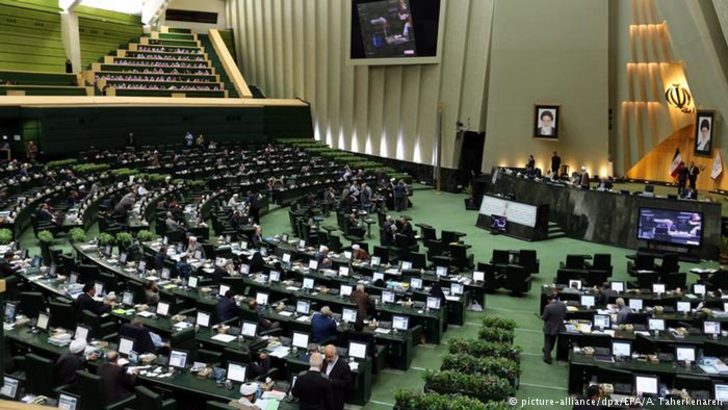The Azerbaijan Question in Iran: A Crucial Issue For Iran’s Future

Iran is a multinational country, composed of Persians, Azerbaijanis(Azerbaijani Turks), Kurds, Turkmens, Arabs, Baluchies and others. The Turkic origin Azerbaijanis in Iran are being discriminated against by the Iranian regime. This problem is further exaggerated by the fact that, the Azerbaijanis are themselves a divided nation, separated by the borders of Iran and the Republic of Azerbaijan. These two circumstances have combined to pose an Azerba ijan dilemma.
The History of the Problem
In the early nineteenth century the Russian Empire occupied the khanates of North Azerbaijan, which were de jure a part of Qajar Iran, but de facto were independent. Despite the close relations between North and Sout h Azerbaijan until the 1930s, these two parts of Azerbaijan have historically developed in separate ways: the division occurred at a time when national self-consciousness amongst Azerbaijanis was not strong enough. It played an essential role in creating distinctions between South and North Azerbaijan.
The inclusion of North Azerbaijan into the Russian Empire-and consequently the cultural differences between Russians and Azerbaijanis-played a significant role in the appearance of self-awareness of Azerbaijanis. These differences have been expressed in language, religion, mentality, customs and historical roots. On the other hand, Northern Azerbaijan had been turned into a Russian colony in terms of tight control over its fiscal systems, exploitation of oil and other natural resources. Because of the fear of religious and ethnic affinity with the Ottoman Turks, Russia established special rule over North Azerbaijan, including repression of any sign of national movements. Despite this repression, the national movement in North Azerbaijan began earlier than in South Azerbaijan. The national movement in North Azerbaijan went through three evolutionary stages:
1. Demand for cultural autonomy (1905-1917).
2. Demand for national-territorial autonomy (1917-1918).
3. Struggle for national independence (since 1918).
Consequently, the creation of the independent Azerbaijan Democratic Republic in 1918, in Northern Azerbaijan formally symbolized the existence of Azerbaijanis as a separate nation.
During this period in South Azerbaijan several factors combined to ensure that a different course of events would transpire. The historical past, religious unity in terms of Shiism, cultural closeness, historical traditions of Persian l anguage and literature, and other related factors between Azerbaijanis and Persians slowed the development of the Azerbaijani national movement in Iran. At the same time, the permanent threat from Russia (Tsarist and Soviet) was an important factor that i nfluenced Azerbaijanis to put aside their national aspirations. For this reason, when Russian aggression against Iran at the end of the 19th and early 20th Centuries grew in its intensity, the main theorists of Pan-Iranism appeared to be of Persian as wel l as of Azerbaijani origin, such as Kasravi, Kazemzade, and Rezazade.
It is important to point here that for a long time during the Qajar and Pahlavi monarchies in Iran, and even in the present Islamic regime, there were and continue to be many ethnic Azerbaijanis, who carried substantial weight with the Iranian government. Those who joined the Iranian elite were tempted by the desire to have their social and economic needs met by the regime.
Azerbaijan in the Administrative and Demographic Structure of Iran
South Azerbaijan consists of Ardabil, East Azerbaijan, West Azerbaijan, Zenjan, Hamadan ostans (provinces), and the adjacent areas of Astara, Gazvin, and other ethnic territories. The size of these territories is est imated at approximately 170,000 sq. km. (the territory of North Azerbaijan is approximately 86,600 sq. km or roughly one third of the total area). Turks dominate by ethnic composition in the Azerbaijani provinces of Iran (more than 90% of the total popula tion).
It is difficult to determine the exact number of Azerbaijanis in Iran. Official statistics are not published detailing Iran’s ethnic structure. According to our research, based on official statistics, indicate that the Azerbaijanis make up nearly 40% of the total population of Iran. This is 75% of all Azerbaijanis in the world.
Despite less territory and a smaller population, North Azerbaijan (Republic of Azerbaijan) is the political, ideological and cultural center of the Azerbaijani Turkish nation. However, the country’s difficult geopolitical position has f orced Azerbaijan to look for allies in and out of the region. South Azerbaijan can be potentially the most faithful and strongest ally in the foreseeable future. The notion of a United Azerbaijan is very popular in the Republic of Azerbaijan.
Cultural Discrimination Policy
Persian chauvinism in Iran has hurt significantly the economic and social well being of South Azerbaijan. Chauvinism as a policy has been practiced implicitly by the Iranian regime and has targeted at its core the na tional culture of Azerbaijanis in South Azerbaijan. The Azerbaijani Turkish language had been removed from official use in all areas, including, schools, courts, government structures, and the army. Specific forms of Azerbaijani cultural expression are pr ohibited as well.
In the last parliamentary elections, Mr. Mahmud Chehregani, who ran on a platform of observing the 15th article of the constitution (that is on, using local languages for literature lessons in elementary schools), was elected in the fir st round of voting from Tabriz. His victory ended in a police interrogation, his torture and finally in arrest in Tehran.
National-Liberation Movement
The national-liberation movement of South Azerbaijan has a history going back 90 years. National-territorial autonomy demands were put before Iranian rulers during various movements-led by Sattarhan (1908-1909), Hiya bani (1920), Pishevari (1945-1946), Shariat-Madari (1979-1980). In their demands, they outlined various ways to resolve the pressing issues of nationality questions in Iran.
There are at least two factors that influence the current situation of the Azerbaijani national movement in Iran:
1. The rise of Azerbaijani Turkish national consciousness and diffusion of the national movement into a higher social strata.
2. The restoration of independent Azerbaijani statehood in the North.
Amongst Azerbaijanis in Iran there are three main viewpoints for dealing with the national problem of South Azerbaijan:
1. A group made up of religious, industrialists and bureaucrats, personalities who occupy a prominent position in the Iranian state, and their ideologists support the idea of a united Iran (“national Irano-centrists”). They strive to in crease the share of authority and capital within a single Iran. They support the notion of Turkisation of Iran. This group supports the idea of the unification of Iran with North Azerbaijan.
2. A group of intellectuals, industrialists and bureaucrats who fear the division of Iran and support the idea of granting South Azerbaijan (at the same time to other ethnic-national minorities) cultural or national-territorial autonomy , which is regarded by them as the optimal way of resolving the Azerbaijan problem. “Democracy to Iran, autonomy to Azerbaijan” is a very popular idea amongst this interest group.
3. The third group is represented by new political organizations and groups, which support the independence of South Azerbaijan and the idea of a United Azerbaijan. The appearance of these organizations signals the beginnings of a new s tage in developments related to the question of Azerbaijan in Iran. Those elements that are radical within these groups do not believe that the ethnic question in Iran can be resolved in an evolutionary manner. They believe that in order to achieve their national goals they should use all means possible, including military means if necessary.
The Iranian Government’s Position
Any ethno-national issue in multi-ethnic Iran is one of the most important factors affecting the future of the country. Choosing the current form of government and its support is closely connected with the multinatio nal structure of Iran. The ideology of Pan-Iranism was hurt by the collapse of Shah’s regime. Islam, as the centralizing ideology, became the main factor and brought the different nations together. The problem of non-Persian national minorities in Iran co incides with the problem of divided nations as well. The Iranian leadership deals with these problems by trying to involve representatives of ethnic groups and national minorities into government structures, but they do not make any concessions in the fie lds of language, culture or self-governance.
The sudden emergence of the independent Azerbaijan state in the North has caused many problems for the Iranian leadership. The mere existence of the Republic of Azerbaijan, above all, has had an important influence and impact on the nat ional movement in Iranian Azerbaijan.
The overall conclusion is that the future of Iranian statehood itself could be problematic. Part of the Iranian leadership, especially high-level politicians of Azerbaijani Turkish origin, support inclusion of the “ancient Iranian land, ” i.e., the Republic of Azerbaijan into Iran. Most of the Iranian leadership, however, rejects such idea as unrealistic and undesirable. In their opinion, an increase in the Turkish elements in Iran and the politicization of the Azerbaijani population wil l cause additional concern for Persian nationalism.
Therefore, the current Iranian regime tries to bring the Republic of Azerbaijan into its political sphere of influence in an effort to eliminate the influence of the Republic of Azerbaijan on the Azerbaijani population of Iran. In so do ing, Iran is demonstrating the following political interests:
1. To prevent the formation of a truly independent and prosperous of the Republic of Azerbaijan and minimize its influence in South Azerbaijan, in order to insure the territorial integrity and internal stability of Iran.
2. To prevent the increase of US and Turkish influence in Azerbaijan and Central Asia.
3. To prevent integration of the Turkic world.
4. To gain strongholds in order to influence the Muslims of the Caucasus, Central Asia, and the Russian Volga region.
5. To have free access to Azerbaijan’s market and natural resources.
6. In accordance with the official “export of Islamic revolution” doctrine, to create an Islamic, pro-Iranian regime in Azerbaijan.
Recently, there has been intensified ideological activity in Iran on the Azerbaijan question. The active propaganda on the “absence” of ethnic unity in both North and South Azerbaijan, the increased ideological struggle against Turkism and the Turkic world by official propaganda, the ignorance of existence of independent Azerbaijan by the people are all characteristic features of the official policy of Tehran. In addition, repressive measures and the police regime toward the Azerbaijani activists in Iran have also been increasing.
Conclusion
The resolution of ethnic problems in Iran, including the Azerbaijan problem, is closely related with democratization in Iran. In the near future and in the next political crisis in Iran, these ethnic issues will be o n the agenda. It should be noted that this topic played a role in the last presidential elections as well. The extent and intensity of the Azerbaijan question, that is, cultural autonomy, national-territorial autonomy or the demands for full independence will depend on the influence and integrity of ethnic forces, the extent of support for national ideals and finally, foreign factors.


























